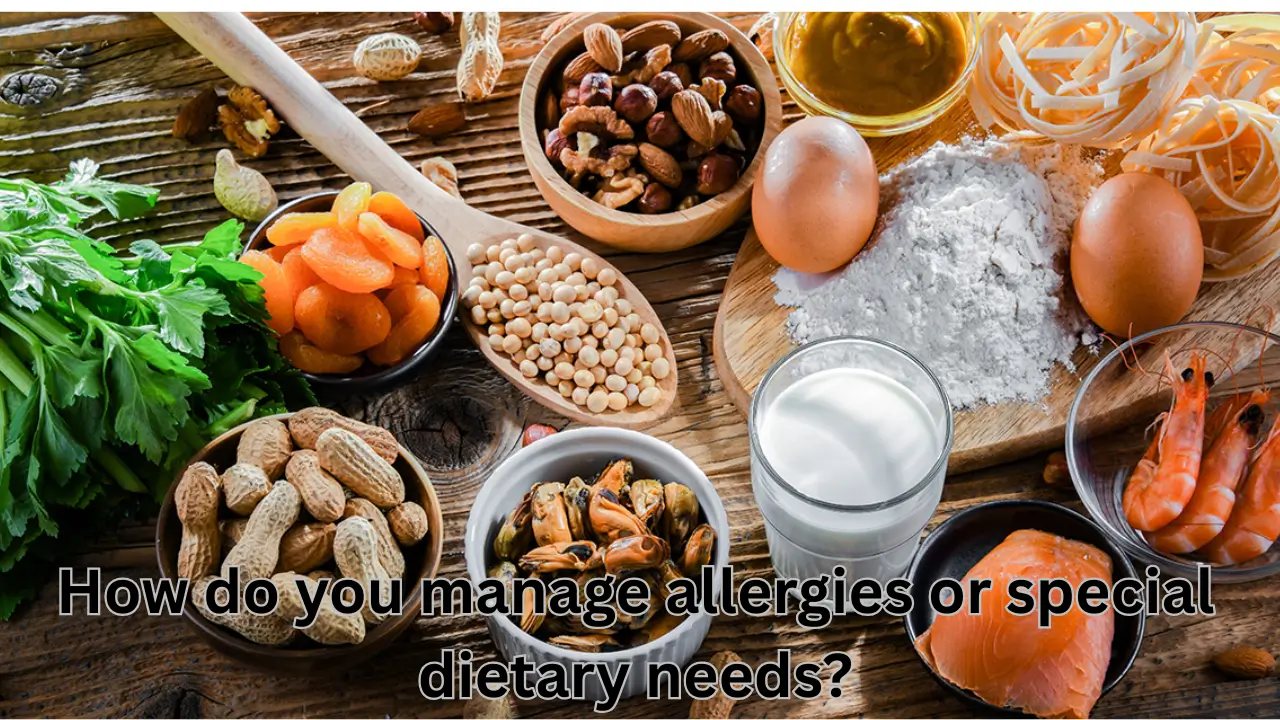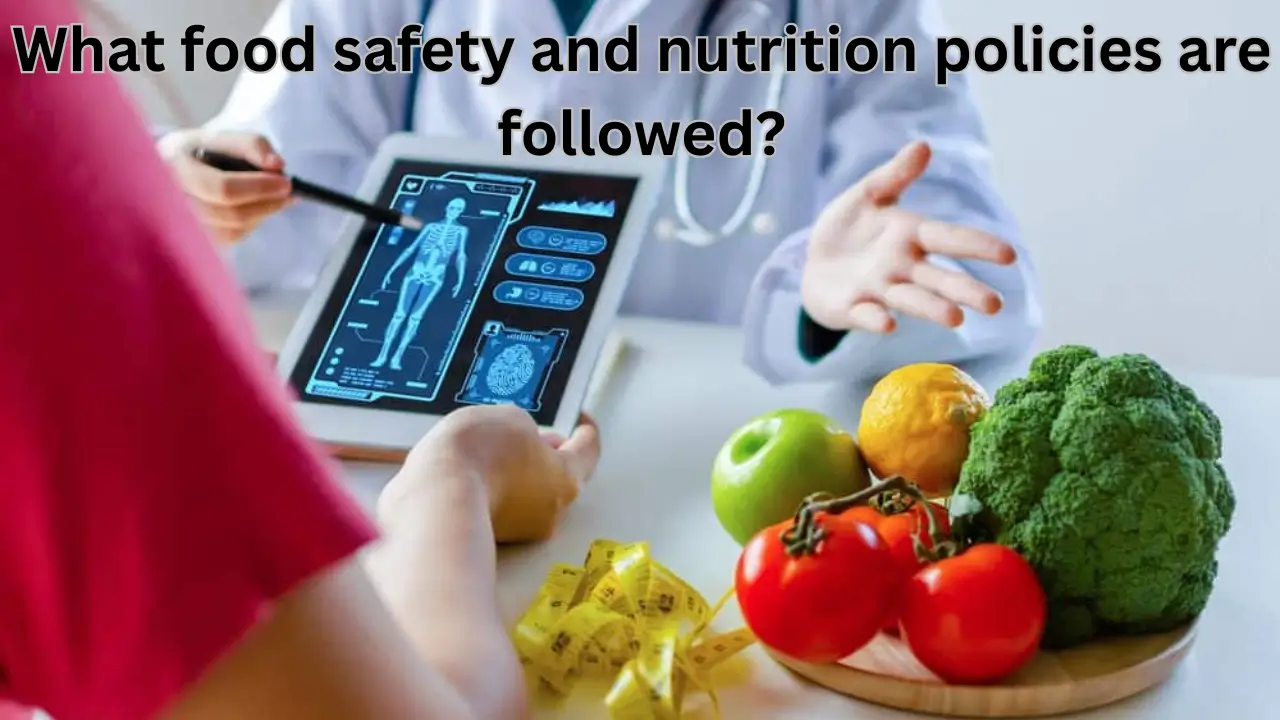Food allergies and special dietary requirements are becoming more common in today’s world. Whether it’s due to medical conditions, personal health goals, or lifestyle preferences, managing these needs requires awareness, planning, and consistency. Understanding safe practices not only helps in reducing health risks but also improves quality of life.
Understanding Allergies and Special Diets
Common Food Allergies
Food allergies occur when the body’s immune system reacts abnormally to certain foods. The most common triggers include:
- Peanuts and tree nuts
- Milk and dairy products
- Eggs
- Wheat (gluten)
- Soy
- Fish and shellfish
Special Dietary Needs Beyond Allergies
Not all dietary needs are due to allergies; many are linked to health conditions, religion, or lifestyle choices:
- Lactose intolerance – Difficulty digesting dairy sugar.
- Celiac disease or gluten sensitivity – Requires gluten-free diet.
- Diabetes – Focus on controlled carbohydrate intake.
- Vegan/Vegetarian diet – Lifestyle choice, excludes meat or animal products.
- Religious dietary rules – For example, halal, kosher, or fasting requirements.
Latest Updates on Allergy and Diet Management (2024-2025)
- Food Industry Response: More restaurants and food brands are now offering allergen-free menus, gluten-free items, and dairy alternatives.
- Plant-Based Foods: Growing demand for oat milk, pea protein, and nut-free substitutes.
- Technology Support: Mobile apps can now scan barcodes and flag allergens instantly.
- School Guidelines: Updated protocols in many countries require schools to provide allergen-safe meal options for children.
- Medical Advancements: Oral immunotherapy (OIT) is being tested as a treatment for peanut and nut allergies to build tolerance slowly.
Practical Tips for Managing Allergies and Dietary Needs
At Home
- Always read food labels carefully.
- Prepare meals separately to avoid cross-contamination.
- Use color-coded utensils and chopping boards (e.g., red for meat, green for vegetables).
- Stock alternatives like almond milk, soy yogurt, or gluten-free bread.
At Restaurants
- Inform the staff clearly about your allergies before ordering.
- Check allergen menus if available.
- Avoid buffets where cross-contamination is more likely.
While Traveling
- Carry snacks and safe foods from home.
- Learn key phrases in the local language (e.g., “I am allergic to peanuts”).
- Keep emergency medications like antihistamines or epinephrine auto-injectors handy.
Comparison Table of Allergies and Special Diet Needs
| Condition / Allergy | Foods to Avoid | Safe Alternatives | Notes for Management |
|---|---|---|---|
| Peanut/Nut Allergy | Peanuts, almonds, cashews, hazelnuts | Sunflower seeds, pumpkin seeds, soy butter | Always carry epinephrine (EpiPen). |
| Lactose Intolerance | Milk, cheese, cream, ice cream | Lactose-free milk, almond/oat/coconut milk | Dairy enzymes available in pill form. |
| Gluten Sensitivity | Wheat, barley, rye, malt | Rice flour, cornmeal, quinoa, gluten-free bread | Strict label reading required. |
| Diabetes | Sugary foods, refined carbs | Whole grains, veggies, protein-rich foods | Monitor carbohydrate intake regularly. |
| Vegan/Vegetarian Diet | Meat, fish, egg, dairy (for vegan) | Tofu, legumes, soy milk, fortified cereals | Ensure enough Vitamin B12 and iron intake. |
Tips for Parents with Children Having Special Needs
Managing allergies and dietary restrictions in children requires extra caution because kids may not fully understand their condition.
- Pack school lunch boxes with safe ingredients.
- Educate teachers and classmates about serious allergies.
- Teach children to recognize symptoms like rashes or difficulty breathing.
Signs of an Allergic Reaction
It’s crucial to act fast when allergy symptoms appear. Common warning signs include:
- Itching or hives
- Swelling of lips, tongue, or throat
- Breathing difficulty or wheezing
- Stomach pain, vomiting, or diarrhea
- Severe cases: Anaphylaxis (life-threatening condition)
Immediate Action: Use prescribed epinephrine (if available) and seek emergency help.
Emotional and Social Impact
Living with allergies and dietary restrictions can sometimes feel limiting, but positive planning helps:
- Join support groups online or in person.
- Involve friends and family in safe cooking habits.
- Try new recipes using substitutes to avoid monotony.
Conclusion
Managing allergies or special dietary needs requires awareness, planning, and preventive action. With increasing food options, better labeling, and new medical research, living with dietary restrictions is becoming easier than before. By staying alert and prepared, one can enjoy healthy and safe meals while living a full and balanced life.











